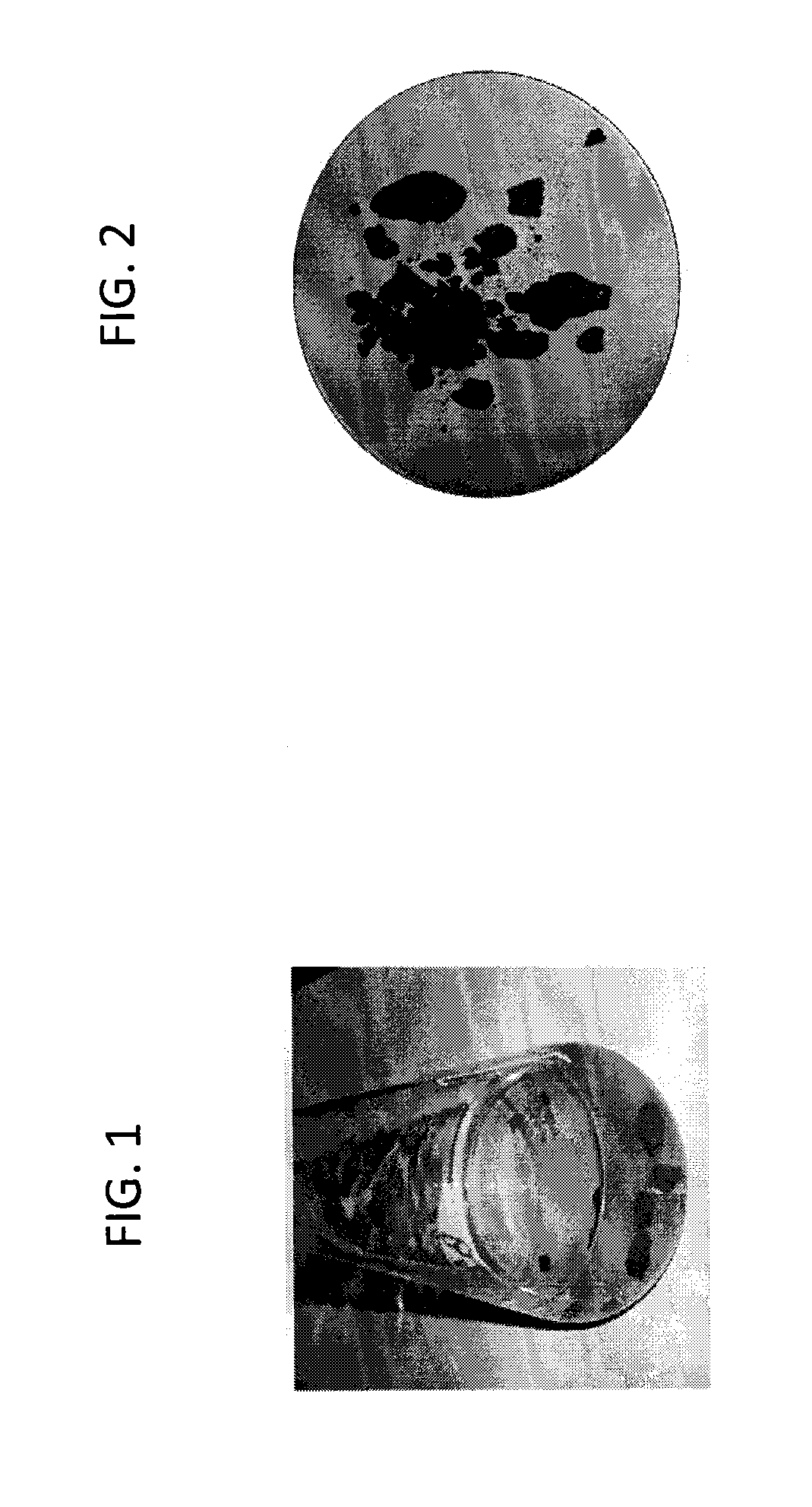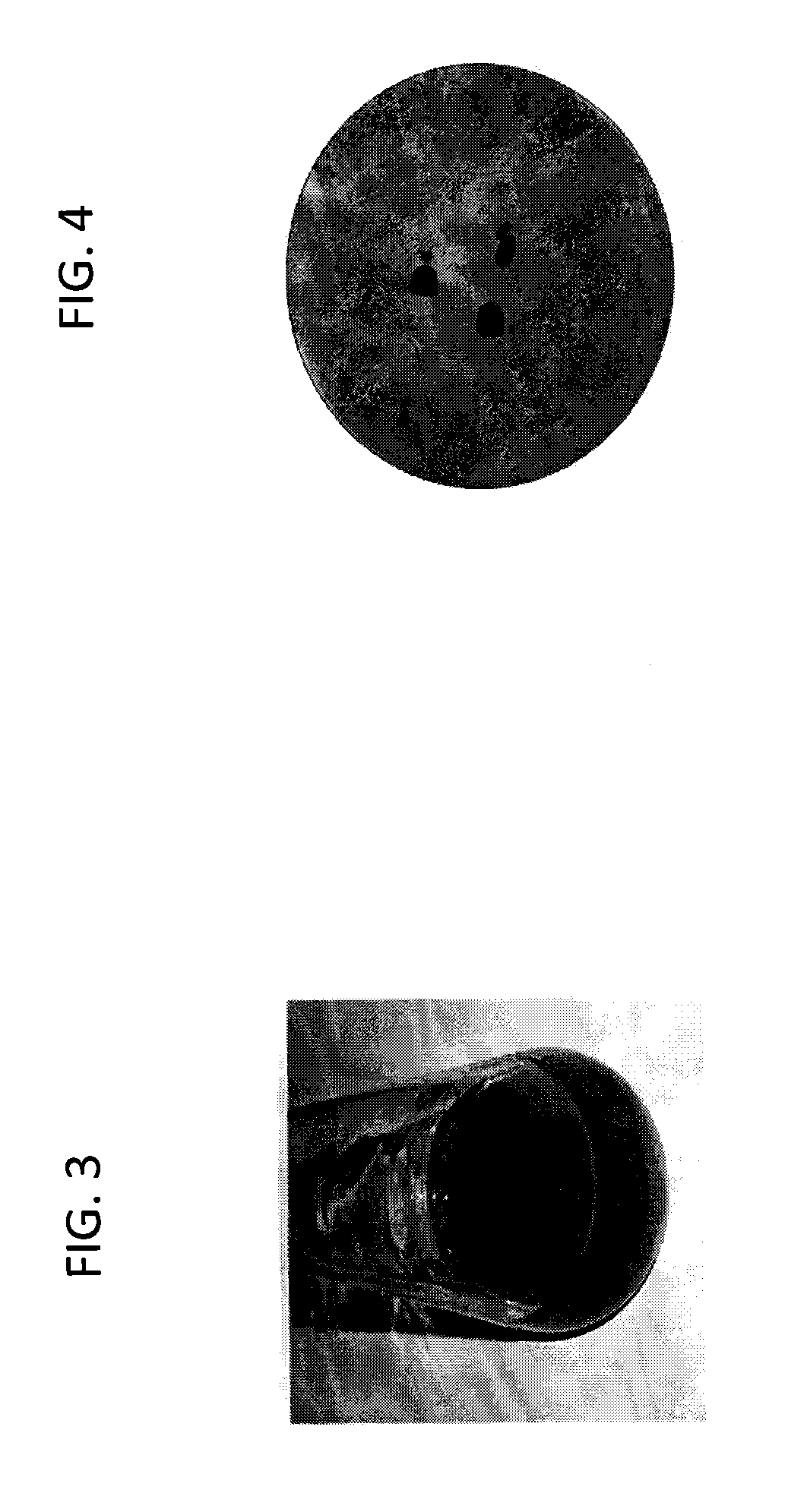Method for removing iron sulfide scale
- Summary
- Abstract
- Description
- Claims
- Application Information
AI Technical Summary
Benefits of technology
Problems solved by technology
Method used
Image
Examples
example 1
Preparation of the Iron Sulfide Scale Removing Composition and Determination of the Solubility of Pyrite (FeS2) Scale Particles in the Removing Composition
[0091]The iron sulfide scale removing composition was prepared by dissolving the chelating agent diethylene triamine pentaacetic acid (DTPA) and the converting agent potassium carbonate (K2CO3) in water to reach the final concentration of 0.5 M and 0.43 M, respectively, and adjusting the pH of the solution to 12-13 with a concentrated potassium hydroxide solution.
[0092]Pyrite (FeS2) scale particles collected from the field were then mixed with and let soak in the above iron sulfide scale removing composition in various ratios (grams of the pyrite scale particles to milliliters of the removing composition) for 24, 48, or 72 hours at 70° C. to determine the solubility of the pyrite scale particles and the dissolution / removal efficiency of the removing composition under each condition.
[0093]FIG. 1 shows the mixture of the pyrite scal...
example 2
Determination and Comparison of the Pyrite Scale Removal Efficiencies of the Removing Composition (DTPA / Converter), DTPA, a Low pH BDCA Solution, and 20 wt % HCl
[0096]The pyrite scale removal efficiencies of 0.5 M DTPA (pH 12-13), a low pH bio-degradable chelating agent (BDCA) solution comprising 0.5M GLDA at a pH of 3-4, and 20 wt % HCl were likewise determined in parallel with the removing composition (DTPA / Converter) following a 48-hour soaking treatment at 70° C., with the results presented in FIG. 7. The removing composition (DTPA / Converter) exhibited the highest pyrite scale removal efficiency of 85%, followed by, in descending order, 0.5 M DTPA with a 45% removal efficiency, the low pH BDCA solution with a 35% removal efficiency, and 20 wt % HCl with a 20% removal efficiency.
PUM
 Login to View More
Login to View More Abstract
Description
Claims
Application Information
 Login to View More
Login to View More - R&D
- Intellectual Property
- Life Sciences
- Materials
- Tech Scout
- Unparalleled Data Quality
- Higher Quality Content
- 60% Fewer Hallucinations
Browse by: Latest US Patents, China's latest patents, Technical Efficacy Thesaurus, Application Domain, Technology Topic, Popular Technical Reports.
© 2025 PatSnap. All rights reserved.Legal|Privacy policy|Modern Slavery Act Transparency Statement|Sitemap|About US| Contact US: help@patsnap.com



